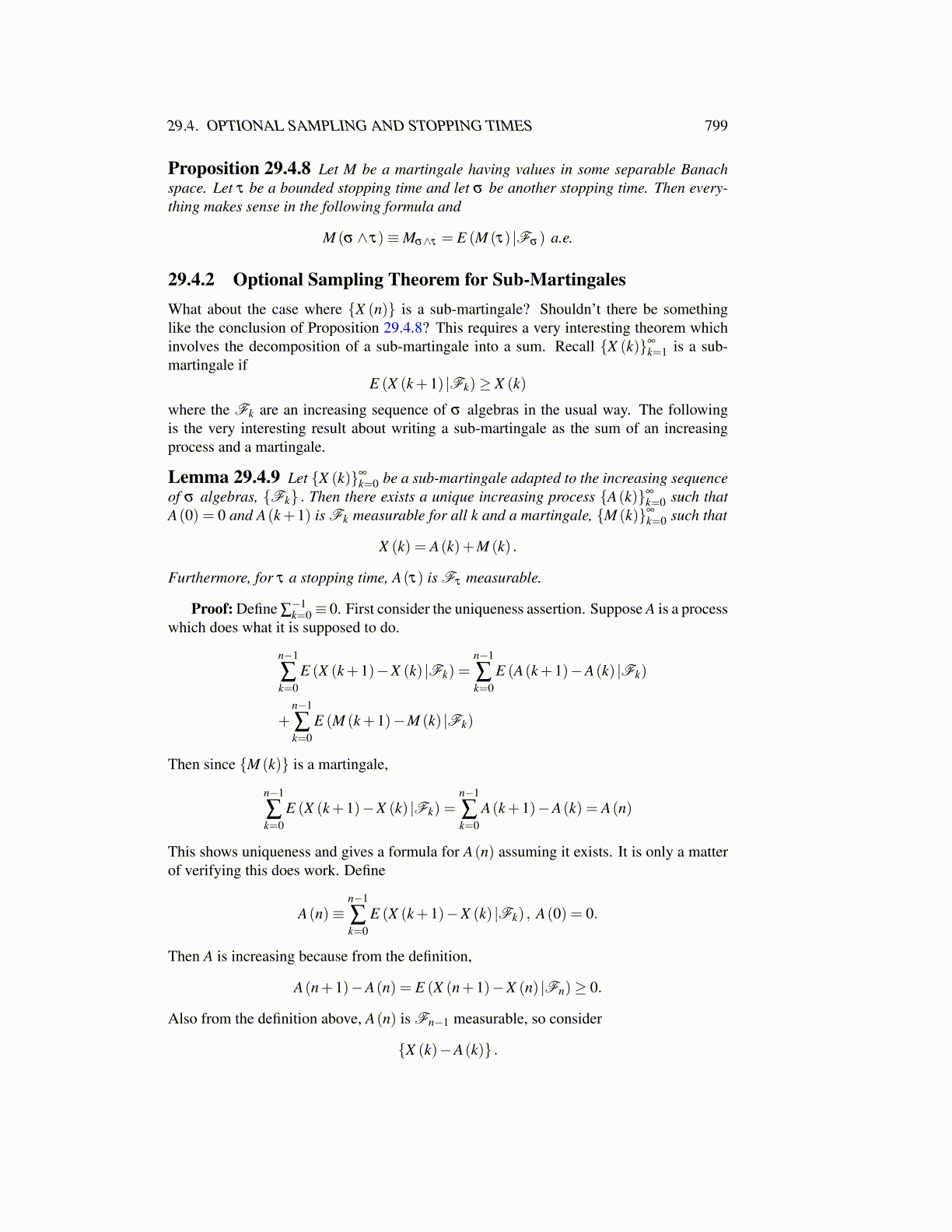
29.4. OPTIONAL SAMPLING AND STOPPING TIMES 799
Proposition 29.4.8 Let M be a martingale having values in some separable Banachspace. Let τ be a bounded stopping time and let σ be another stopping time. Then every-thing makes sense in the following formula and
M (σ ∧ τ)≡Mσ∧τ = E (M (τ) |Fσ ) a.e.
29.4.2 Optional Sampling Theorem for Sub-MartingalesWhat about the case where {X (n)} is a sub-martingale? Shouldn’t there be somethinglike the conclusion of Proposition 29.4.8? This requires a very interesting theorem whichinvolves the decomposition of a sub-martingale into a sum. Recall {X (k)}∞
k=1 is a sub-martingale if
E (X (k+1) |Fk)≥ X (k)
where the Fk are an increasing sequence of σ algebras in the usual way. The followingis the very interesting result about writing a sub-martingale as the sum of an increasingprocess and a martingale.
Lemma 29.4.9 Let {X (k)}∞
k=0 be a sub-martingale adapted to the increasing sequenceof σ algebras, {Fk} . Then there exists a unique increasing process {A(k)}∞
k=0 such thatA(0) = 0 and A(k+1) is Fk measurable for all k and a martingale, {M (k)}∞
k=0 such that
X (k) = A(k)+M (k) .
Furthermore, for τ a stopping time, A(τ) is Fτ measurable.
Proof: Define ∑−1k=0≡ 0. First consider the uniqueness assertion. Suppose A is a process
which does what it is supposed to do.
n−1
∑k=0
E (X (k+1)−X (k) |Fk) =n−1
∑k=0
E (A(k+1)−A(k) |Fk)
+n−1
∑k=0
E (M (k+1)−M (k) |Fk)
Then since {M (k)} is a martingale,
n−1
∑k=0
E (X (k+1)−X (k) |Fk) =n−1
∑k=0
A(k+1)−A(k) = A(n)
This shows uniqueness and gives a formula for A(n) assuming it exists. It is only a matterof verifying this does work. Define
A(n)≡n−1
∑k=0
E (X (k+1)−X (k) |Fk) , A(0) = 0.
Then A is increasing because from the definition,
A(n+1)−A(n) = E (X (n+1)−X (n) |Fn)≥ 0.
Also from the definition above, A(n) is Fn−1 measurable, so consider
{X (k)−A(k)} .